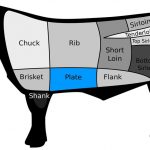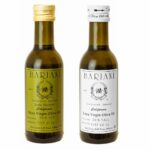
Quality-conscious consumers are increasingly aware of food fraud and food fencing issues, and we frequently receive questions about these topics. With that in mind, we welcome you to Part 1 of our multi-part series on food fraud and food fencing.
If you’ve been following us for a while or generally paying attention, much of this information may already be familiar or not surprising.
The U.S. food system is primarily controlled by a small number of large companies. Major players dominate various sectors, including:
- Agriculture: Companies like Cargill, Archer Daniels Midland, and Bayer
- Food Processing: Firms such as Nestlé, PepsiCo, and General Mills
- Retail: Leading grocery chains like Walmart, Kroger, and Costco
Overall, just a handful of corporations—about 4 to 6 in each major sector—exert significant control over the majority of the U.S. food system, influencing what products are available and how they are marketed.
Food Fraud and Food Fencing are related but distinct concepts within food crime:
- Food Fraud: This involves deliberate deception for economic gain in the production, processing, and distribution of food, including:
- Adulteration: Adding inferior or harmful substances
- Substitution: Replacing ingredients with cheaper alternatives
- Mislabeling: Incorrectly labeling products to mislead consumers
- Counterfeiting: Imitating branded products
- False Claims: Misrepresenting the origin, quality, or health benefits
- Food Fencing: This refers to the distribution and sale of stolen or fraudulently obtained food products, including:
- Selling stolen items through legitimate or illegitimate channels
- Laundering illicitly obtained food by repackaging or relabeling
- Distributing food products acquired through theft or fraud
- Using a food business as a front for illegitimate or illegal actions
Key Differences:
Purpose: Food fraud focuses on making money through deceit in food composition or labeling, while food fencing is about selling and distributing stolen or illegally obtained food.
Occurrence: Food fraud can happen at any point in the food supply chain, while food fencing specifically involves handling and selling stolen or fraudulent products.
Both practices undermine consumer trust and pose significant risks to public health and the integrity of the food supply chain.
Thank you for joining us for this introduction to food fraud and food fencing! In this series, we aim to provide you with the information needed to break away from the corporate food system. While our primary focus will be on food fraud, food fencing is also relevant, interconnected, and worth discussing.
In the upcoming parts of our series, we’ll explore the three most commonly adulterated foods. As a side note, we offer uncompromised versions of all three! Can you guess which one we’ll discuss first?
Our market calendar is currently updated through the first weekend in September. We rely exclusively on word-of-mouth advertising! If you enjoy our content, please invite your like-minded friends, family and colleagues to join our email list.
Stay Vibrant,
Brenna & Kenny






2 Comments
Wow! Great info and I found the graphic disturbing. Thanks
Thank you, look forward to what’s next to learn from the Fishhuggers! 🤗